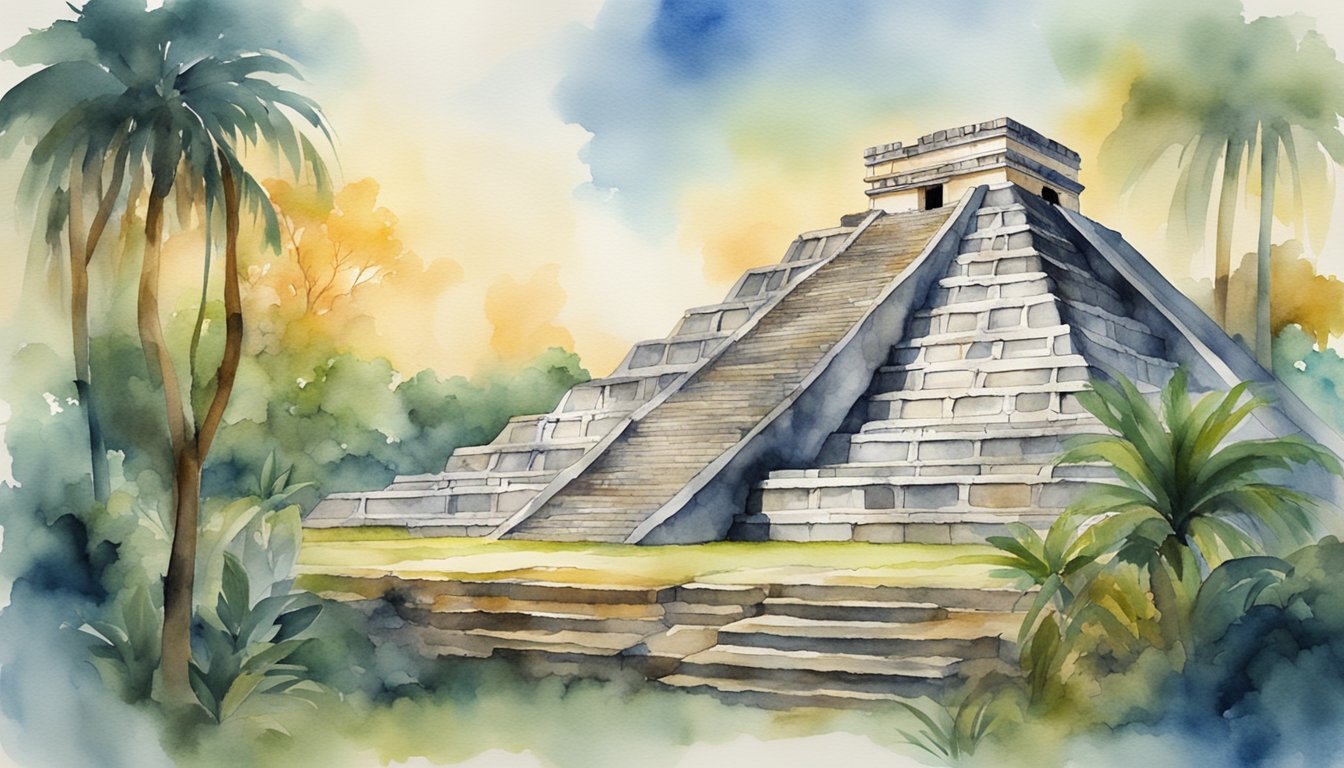Origins and Historical Development

Archaic and Preclassic Periods
The origins of the Maya civilization can be traced back to the Archaic Period, which saw the development of the first settled villages and early advancements in agriculture, especially corn (maize), beans, squash, and later cassava (sweet manioc) [1]. The civilization’s roots lie in the regions of modern-day Mexico, Guatemala, Belize, Honduras, and El Salvador. The Preclassic Period followed the Archaic Period, during which people established more complex societies, built ceremonial centers, and began to develop urban areas [2].
Rise of the Classic Maya Civilization
The Classic Period started around A.D. 250 and is considered the golden age of the Maya civilization [3]. It saw the growth of around 40 cities, such as Tikal, Uaxactún, Copán, Bonampak, and Dos Pilas. These cities were autonomous city-states that maintained their independence despite sharing a common culture, traditions, and the sophisticated Maya script, known for being the most highly developed writing system in pre-Columbian Americas [4]. The civilization is also renowned for its advances in art, architecture, mathematics, and astronomy [5].
Influence from the highland city of Teotihuacan could be seen in the art and architecture of Mesoamerican civilizations, including the Classic Maya. However, the relationship between the two cultures is still a subject of debate among scholars [6].
Collapse and the Post-Classic Period
The collapse of the Maya civilization took place in the 9th century and still remains somewhat of a mystery. The causes of this collapse have been debated by historians and archaeologists, with hypotheses ranging from climate change, warfare, disease, or a combination of these factors [7]. The Post-Classic Period marked a time of decline, political fragmentation, and cultural shift, which led to the emergence of regional powers in Yucatán Peninsula, such as Mayapán [8].
Despite the collapse, remnants of Maya culture and tradition were maintained in the Post-Classic Period, and new cities emerged in the northern lowlands, where the Maya civilization continued to survive. However, the arrival of the Spanish in the 16th century led to the conquest of the region and the assimilation of the remaining Maya population into the Spanish empire [9].
Cultural and Scientific Achievements
Maya Writing and Calendar Systems
The Maya civilization had a highly developed writing system that used glyphs and inscriptions to record information about their history, rituals, and religious practices. Their writing system is considered to be the most sophisticated and advanced in the pre-Columbian Americas. They also developed an intricate calendar system that consisted of a Long Count calendar, a ritual calendar, and a calendrical system that allowed them to track time accurately.
The Maya used codices made from paper to record information about their society and religious beliefs. They were one of the first civilizations to use the concept of zero in their mathematics, which helped them develop a robust counting system.
Art, Architecture, and Urbanism
Maya cities were centers for art, architecture, and urbanism. Famous cities such as Tikal, Palenque, Copán, Calakmul, Chichén Itzá, and Uxmal are known for their stunning pyramids, temples, palaces, and plazas. The art produced during this time showcases intricate details, and beautiful stonework, paintings, and carvings that portray complex scenes of the Maya mythology, history, and daily life.
In addition to their artistic achievements, the Maya were skilled architects, building sophisticated structures that have withstood the test of time. Their architecture often featured elaborate facades adorned with glyphs and inscriptions.
Astronomy, Mathematics, and Agriculture
The Maya civilization is also known for its advancements in astronomy and mathematics. They had a keen interest in observing celestial bodies and keeping track of their movement through the sky, which resulted in a deep understanding of astronomy. This knowledge allowed them to predict solar and lunar eclipses and played an essential role in their agricultural practices.
Agriculture was a vital component of the Maya civilization, with maize, beans, and squash forming the backbone of their diet. Despite facing periods of drought, they managed to develop advanced agricultural techniques and created extensive trade routes to acquire goods from other regions. Overall, the cultural and scientific achievements of the Maya civilization demonstrate their remarkable ingenuity and give us a glimpse into their complex and fascinating society.

